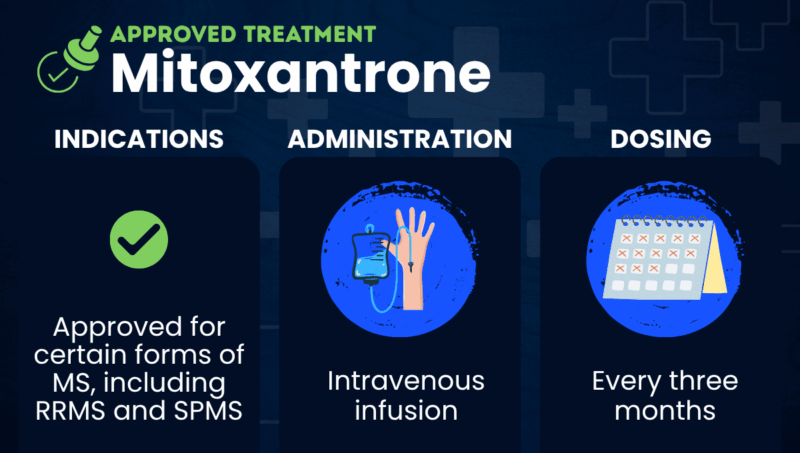FAQs about mitoxantrone
Mitoxantrone was approved by the U.S. Food and Drug Administration in 2000 as a treatment for multiple sclerosis (MS). Indications include relapsing–remitting MS and secondary progressive MS, whether active or nonactive. The medication was first approved in 1987 for a type of blood cancer called acute nonlymphocytic leukemia, and again in 1996 for prostate cancer.
Based on animal data, mitoxantrone may harm a developing baby during pregnancy. For that reason, women who can become pregnant should use effective birth control during treatment and have a negative pregnancy test before receiving each dose of mitoxantrone. Those who become pregnant while on mitoxantrone should consult their healthcare team.
It is not known whether mitoxantrone interacts with alcohol. However, alcohol may worsen certain side effects of the treatment, so patients receiving mitoxantrone should talk to their healthcare team about safe alcohol use.
In one of the clinical trials supporting mitoxantrone’s approval for multiple sclerosis, patients who received mitoxantrone in combination with the corticosteroid methylprednisolone had fewer brain lesions and relapses and less disability progression after six months of treatment. However, because each patient responds to treatment differently, it is difficult to predict when someone will begin seeing results of mitoxantrone.
Hair loss, also known as alopecia, is one of the most common side effects of mitoxantrone. Sudden weight gain may also occur, potentially as a result of heart problems caused by the treatment. Patients who experience any unexpected side effects should talk to their healthcare team.
Related Articles

 Fact-checked by
Fact-checked by 



